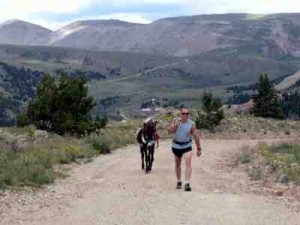Brief by Central Staff
Military – January 2006 – Colorado Central Magazine
Rural communities throughout the United States, including Colorado, produce a higher percentage of military recruits, according to a study by the National Priorities Project in Northampton, Mass., which examined the Zip codes of enlistees in 2004.
The researchers suggested a couple of reasons. Young people might feel more patriotic in rural areas, for one. For another, often there aren’t a lot of job opportunities for young people, which can make the military more appealing.
For instance, Jackson County (its seat is Walden, about 150 miles north of Leadville) ranked second in the entire country, with an enlistment ratio of 275.1 per 100,000 population. On the other hand, Jackson County has only 1,454 people, and so its four recruits made its percentage soar. In a county that small, all it takes is one kid deciding to enlist, and talking a few of his buddies into going along. Thus tiny San Juan County (Silverton) had only one enlistee, but with only 575 people, that gave San Juan a 173.9 ratio, well above the state average of 66.7
The researchers released a list with most of Colorado’s 64 counties, although it did not include Cheyenne, Eagle, Gilpin, Kiowa, Mineral, and San Miguel. It covered enlistments in the Army, Navy, and Air Force, but not the Marine Corps.
Among big counties, the state’s highest enlistment ratios were in Mesa (Grand Junction) at 118.7 and El Paso (Colorado Springs), 102.8. The lowest were Denver, 34.7, and Boulder, 35.1.
All in all, Central Coloradans are a little less prone to enlist than Coloradans statewide — we’re at 61.3 and the state average is 66.7. Above the state average are Alamosa (92.8), Custer (104.1), Frémont (75.9), and Costilla (83.3). Under the state average are Chaffee (41.3), Gunnison (63.5), Park (47.5), Rio Grande (40.3), Saguache (28.5), Lake (25.9), and Conejos (47.6).
One contributing factor in Central Colorado’s low numbers may be the age of our average citizens – since rural resort communities tend to house a lot of retirees. Also young people who live and work here often have parents – and thus Zip codes – elsewhere.
But we couldn’t find many other common factors (household income, county political trends, etc.) in either group of counties, which leads us to suspect that the folks at the National Priorities Project had too much time on their hands.

